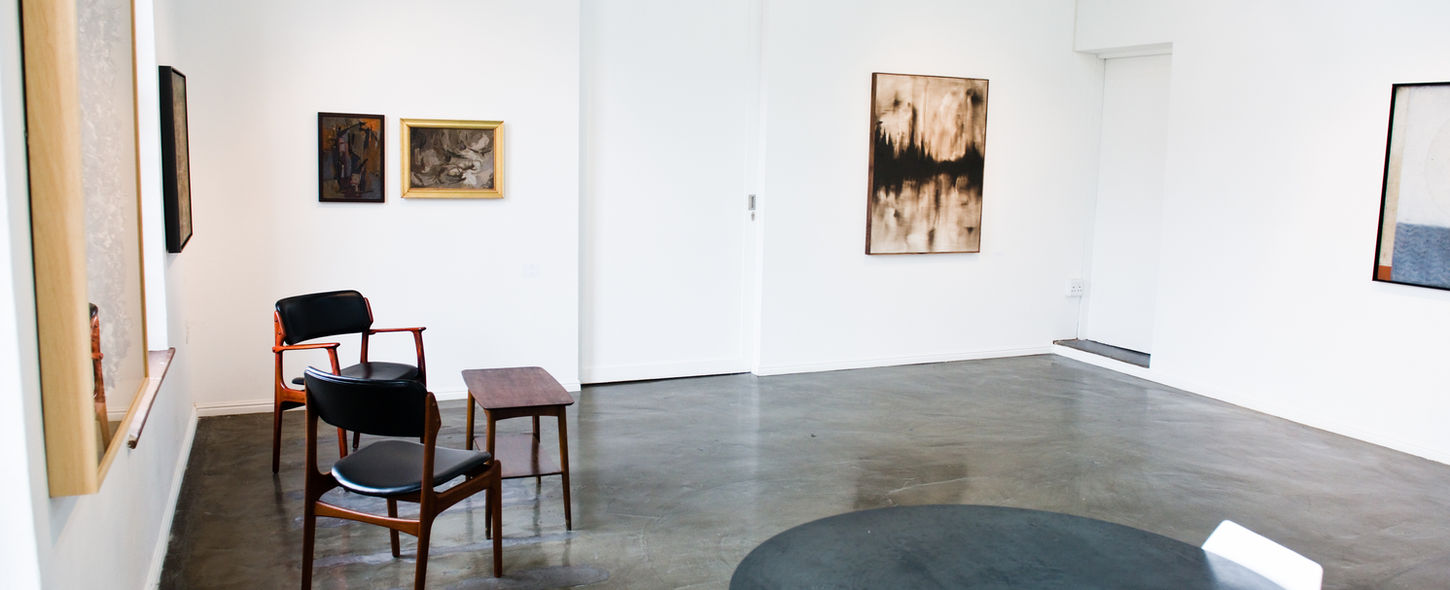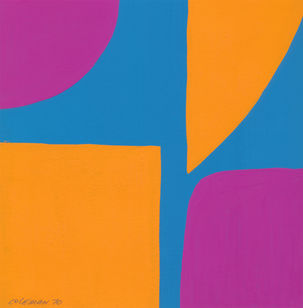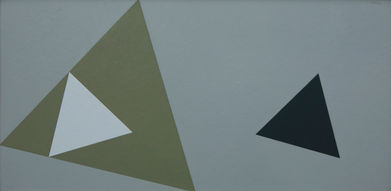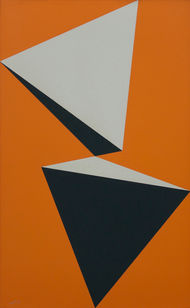Back to the Future II: Abstract Art in South Africa: Past & Present
EXHIBITION TEXT
Group Exhibition
25.04.15 – 20.06.15
Stellenbosch
BACK TO THE FUTURE, Abstract Art in South Africa: Past & Present forms part of an ongoing programme of exhibitions introduced by SMAC to evaluate South African abstraction. The gallery first mounted a series of three survey exhibitions in 2007, 2008 and 2009 with a follow up again in 2011. The original Back to the Future exhibition presented in 2013 was the first to juxtapose the work of the pioneer South African abstractionists against that of their 21st century successors, and explore the ways in which a younger generation of artists are adopting and renewing the visual language of abstraction. Back to the Future II, the second instalment, pursues the same inquiry and includes work by:
Participating Artists
Kevin Atkinson
Kenneth Bakker
Walter Battiss
Jan-Henri Booyens
Christo Coetzee
Ruann Coleman
Trevor Coleman
Barend de Wet
Paul du Toit
Nel Erasmus
Alexandra Karakashian
Erik Laubscher
Turiya Magadlela
Mongezi Ncaphayi
Albert Newall
Tony Nkotsi
Douglas Portway
Helen A. Pritchard
Cecily Sash
Gerda Scheepers
Fred Schimmel
Larry Scully
Themba Shibase
John Skotnes
Simon Stone
Hannatjie van der Wat
Edoardo Villa
Sandile Zulu
The question of why abstraction is enjoying such a surprising resurgence world-wide, demands an historical explanation. When Modernism had completed its trajectory, it was felt that the entire range of styles it had introduced had exhausted their potential. Modernism as a project had come full circle. There was a terminal sense of finality, closure and disorientation. Now that all the –isms (from Fauvism to Futurism – Dadaism, Suprematism to Surrealism) were played out, what new direction could art possibly take?
Although the introduction of new media like performance, photography and video, opened up a range of fresh opportunities, post-modernism denied there was any necessity for a reigning style, such as had always prevailed in the past. The notion of progress was dismissed. An indiscriminate pluralism and the appropriation of any style of any period seemed the only feasible strategies. The arrival of the Internet liberated all art from the trammels of time and history, and made atemporality the basic condition of all art-making. The screen projected all art historical styles into an eternal present where they remained forever current and valid. This post-modernist ‘solution’ of promiscuous eclecticism did not satisfy artists and the intelligentsia for very long, and when it too reached its sell-by date, another crisis arose, and once again the question asked was; where do we go from here?
In Europe and America, abstract art never completely died out and although it became deeply unfashionable during the 80s, 90s and early years of the 20th century, distinguished artists like Cy Twombly, Richard Serra, Brice Marden, Bridget Riley and Agnes Martin continued to practice it. However attention accrued to figurative artists and a flurry of movements and styles such as Pop, Assemblage, Land Art, Photorealism, Neo-Expressionism, new media and installation ensured that abstraction appeared increasingly passé.
Then just as abstraction appeared to have sunk to its nadir, it enjoyed a massive resurgence amidst artists, dealers, curators, critics, and collectors. Over the past ten years, major exhibitions at museums, their commercial equivalents, the art fairs and biennales all bore testimony to this. South Africa was no exception, as the number of young artists included in this exhibition indicates.
How does abstraction offer a way out of the post-modernist impasse? Both before and after the mid 20th century, abstraction was almost universally regarded as the regnant style of Modernism, the supreme style as it were. It enjoyed this immense prestige as essentially it is far more than a style. Abstraction has always been an alternative approach to art, based on a premise which gives it a range and freedom that no other movement possessed.
Abstraction, or so the theorists insisted, furnishes artists with a means of bypassing the world of appearances, and venturing into realms of intangible feeling, emotion and sensation. By doing away with identifiable subject matter, and reducing the image to shapes, forms, lines and colours, any allusion to the real world is eliminated. Thereby, pure abstraction sidesteps the conscious mind, and conveys far more profound, deep-seated and primal emotions than representational art can access. Bob Nickas, a perceptive American critic, maintains that contemporary abstract painting enables you to transcend what you see, and experience how the world feels, and that it is this, that explains its perennial attraction.
Although South Africa is playing a major part in abstract internationalism, the development of abstraction was historically disadvantaged in this country. As modernist abstraction never originated here, it remained an imported style that merely imitated developments overseas. It was copied without being fully digested, and the results often lacked understanding and insight. Abstraction only started to become assimilated when local artists responded to their surroundings, rather than mimicking European and American art.
The spectacular revival of abstraction suggests that the past is becoming the future, as so many international and South African young artists turn to the first decades of the 20th century – when abstraction was the future, the medium whereby human consciousness would be transformed and society turned into a ‘Utopia’. Youth remains fixated on the heroic years when abstraction first irrupted into our visual consciousness, and its whole history. In South Africa in particular, performance, video and photography often remains dominated by socio-political concerns. In many ways, both artists and the public eventually become tired of issue-driven art and this also contributes to the return to abstraction.
Globalization too explains the unity of the new international art world and the supremacy of abstraction. The divisions between capitalism and communism, which followed entirely different artistic trajectories, came to an end with the collapse of the USSR and the advent of freedom in Eastern Europe. The same thing occurred with the change of policy in China and other parts of Asia, all of whom now play a vital role in contemporary artistic discourse. As political differences subsided, so artistic boundaries disappeared. Art fairs, biennales, the Internet and a flood of art magazines and other publications have all contributed to the unification of the art world, and the result is that the abstract work emanating from all five continents is very similar, and rarely projects a national identity.
Even if the conceptual reasons that brought the historical abstract movements and their contemporary equivalents into being are very different, the end-products are aesthetically almost indistinguishable, as abstraction is essentially timeless. To a large extent, the language of the new abstractionists is the language of their predecessors. Their subject is abstraction, its history, the variety of forms it assumes, the methods of production it employes, and its repertoire of conventions, themes, compositions, materials, and chromatic tendencies.
Even though abstraction is all the rage again, the belief in the efficacy of art in stirring unconscious depths, transforming the world and challenging tradition and the status quo has vanished. When contemporary artists employ these styles of social regeneration or spiritual renewal such as De Stijl or Russian Constructivism, they use them cynically and ironically, enclosing them between inverted commas as it were. Landmark exhibitions like The Forever Now: Contemporary Painting in an Atemporal World showcased at MOMA in 2014, seem to regretfully accept that significant innovation is no longer possible, and that art, no matter how bravura and virtuosic it may seem on the surface, cannot transcend the current stalemate.
The new abstractionists are abstractionists by default. Generally they are not formalists and they do not necessarily set out to create abstract works. They wish to pioneer new forms and methods of art-making and these often – accidentally – assume an abstract appearance. This preoccupation with creation and experimentation was anticipated in the 50s and 60s. Jackson Pollock’s drip paintings changed the nature of the interaction between the paint and the canvas, often eliminating the brush. Helen Frankenthaler laid her canvases on the floor and saturated them with washes of thin paint. Yves Klein poured paint onto nudes who then rolled over the canvas to the sounds of a small orchestra. Antoni Tapies changed the nature of oil paint by mixing it with clay and marble dust. Lucio Fontana started to slash his canvases, opening up spaces behind them.
Like these forebearers, the main goal of the new generation is to emphasize process. They are far more interested in the making of the work of art, than the final form that work of art may take. There is an obsession with materials, the potential of digital imagery and mixing media.
The critical reaction to the renascence of abstraction in the USA in particular has been divided. Even the work of the young abstractionists who have achieved unbelievable market success such as Parker Ito, Jacob Kassay, Lucien Smith and Oscar Murillo is hailed as ground-breaking and innovative by some leading intellectuals, but contemptuously dismissed as “Zombie Formalism” and “MFA-clever” painting by others. Many viewers find the look of new abstraction beguiling, but the content vapid, or non-existent.
An obvious reason why abstract art (historical and contemporary) still appeals so strongly to the market is that, as Nickas further points out; “Abstraction is desirable for buyers because it doesn’t demand too much. There’s no disturbing content, nothing overtly sexual or political or offensive. It doesn’t intrude in the way that figurative or representational art often does.”
How does this all apply to the local scene is the question Back to the Future II asks. In addition, it questions whether abstraction has become fully naturalised as an indigenous style, and assesses whether the younger artists have enlarged the range of possibilities and taken abstraction in new directions, or whether they are merely producing quotes while recycling the past.
























































